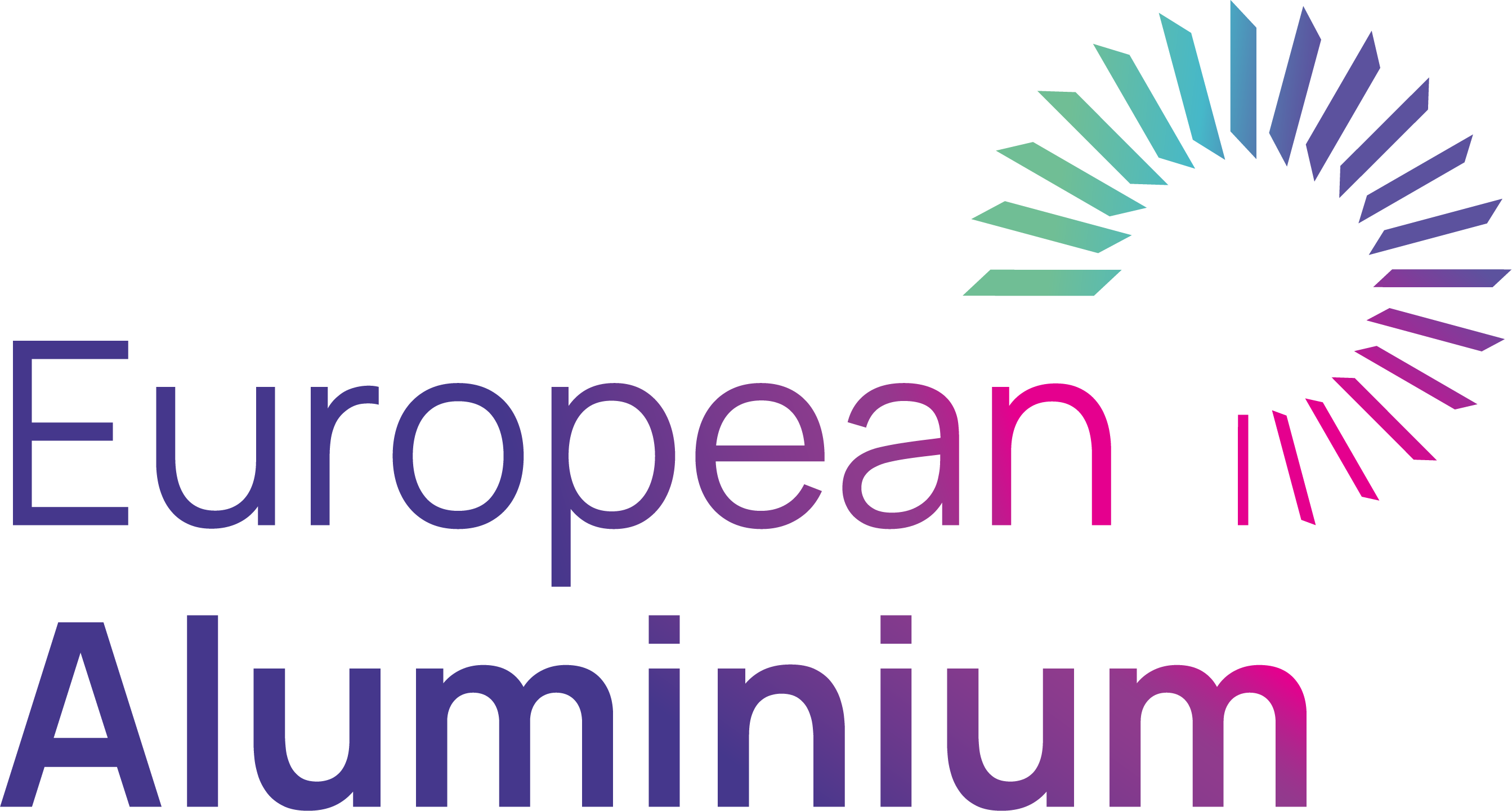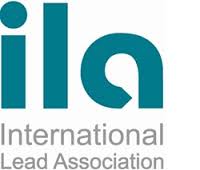BASE METALS
PRECIOUS METALS
TECHNOLOGY METALS
Did you know? 75% of all aluminium ever produced is still in use.
Key uses:
- Vehicle lightweighting
- Beverage cans & other packaging
- Buildings and construction
Industry figures:
- 255,000 employees in Europe’s aluminium industry
- 16% of world production, half from recycled sources
- 53% reduction in GHG emissions since 1990
Recycling:
- Over 90% of aluminium is recovered from buildings and transport, and 60% from packaging.
- Recycling aluminium uses only 5% of the energy needed for the primary production.
Did you know? Copper is the best conductor of electricity apart from silver
Key uses:
- 60% of copper is used for electrical applications; including power distribution, renewables, telecommunications, transport
- 40% of copper is used in non-electrical applications; including air conditioning, water distribution, architecture, aquaculture
Industry figures:
- 50,000 employees in Europe’s copper industry
- €45billion turnover per year
- 44% of copper EU demand comes from domestic and industrial scrap (recycled sources)
- 60% reduction in GHG emissions achieved since 1990
Recycling:
- Up to 90% of all copper in European buildings and civil infrastructure is recycled
- Overall, 70% of copper in end-of-life products is recovered
- Recycling copper saves 85% of the energy needed for primary production
Did you know? 99% of Europe’s lead-based car batteries are recycled at their end-of-life
Key uses:
- Lead-based batteries, for automotive and energy storage applications
- Lead batteries, providing emergency power for mobile phone networks and IT infrastructure
- Radiation protection in hospitals
Production:
- Globally, 11 billion tonnes of lead gets produced each year
- The world market for refined lead stands at $15 billion
Recycling:
- Lead has one of the highest recycling rates of all materials in common use today
- More than 95% of scrap lead sheet is collected and recycled – no lead goes to landfill
- Europe and North America have battery recycling rates of close to 100%
Did you know? 57% of all nickel ever produced is still in use
Key uses:
- Stainless steel
- Sustainable building and construction
- Low-carbon transport
- Mechanical engineering
- Electrical and electronic equipment
Industry figures:
- Roughly 13% of the global nickel output originates from European nickel producers
- The lifetime of nickel in building and construction is over 100 years
- Nickel-containing products have high corrosion resistance and are fully recyclable, allowing less maintenance and more efficiency
Recycling:
- Nickel containing products are fully recyclable at their end-of-life
- Nickel has a recycling efficiency of 68% globally
- Stainless steel products are recycled in part due to the valuable nickel they contain
Did you know? We all need zinc to live – a recommended 10-15 mg/day
Key uses:
- Galvanising, to protect steel from corrosion in cars and other applications
- Bronze and brass production
- Roofing and other architecture
Key industry figures:
- Globally, 10.6 million tonnes of zinc was produced in 2015
- 13 zinc smelters are currently operating in Europe
- 33% reduction in energy intensity since 1990
Recycling:
- Zinc is recovered from residues, old roofing material and brass or steels scrap.
- In Europe, 90% of rolled zinc is recovered and recycled at end-of-life
- Recycling accounts for some 25% of the metal produced globally each year
Did you know? A third of the world’s tin is used to stop corrosion in food & beverage cans
Applications
• Soldering in printed circuit boards
• Food and beverage cans, providing anti-corrosion coating
• Springs, gears and bearings
Production
• 25 million tonnes annual global production
• European production is now primarily from recycled material
Recycling
• Secondary tin accounts for 15% of world production
• In the recycling of tin cans, tin is recovered through electrolysis
• Tin is also recovered from solder alloy
Did you know? Only 200,000 tonnes of gold have ever been produced – barely enough to fill four Olympic sized swimming pools
Properties
• One of the best conductors of heat and electricity, along with copper and silver
• A very soft metal, which usually must be hardened by alloying
• Can be beaten into semi-transparent foil only 0.01 mm thick
Uses
• Jewellery
• Wires and coatings in the electronics industry
• Dentistry
Recycling
• Recycling accounts for 30% of global gold production
• Gold is recovered from electronics waste, jewellery production scrap and old jewellery
• It is also recovered as a by-product from the refining of other metals, such as copper
Did you know?
Properties
• A shiny white metals, more ductile and malleable than copper, but less so than gold
• Higher electrical and thermal conductivities than any other metal
• Presents a blistered surface when solidified in air, due to the release of dissolved oxygen
Uses
• Relays and contacts in electronics applications
• Jewellery and silverware
• Photography, mirrors and dentistry
Recycling
• Recovered from the residues of copper, nickel and lead refining processes
• Also recovered from electronics waste and other industrial scraps
Did you know?
Properties
• An attractive silver-white metal that is malleable, ductile and very heavy
• Generally hardened by alloying with iridium
• Catalytic properties
Uses
• Car catalysts
• Jewellery
• Fuel cells
• Computer hard disks
Recycling
• High-recycling rates from spent automotive catalysts
• Also recycled from old jewellery and electronics waste
• Significant volumes of platinum are used in closed-loop production processes, e.g. in glass manufacturing
Did you know?
Properties
• A white metal that resembles platinum.
• Has the lowest mass and the melting point of all the platinum-group metals (PGM).
• Capable of absorbing, at room temperature, 600 to 900 times its own volume of hydrogen, depending on its physical state.
Uses
• Automotive catalysts
• Electricity and electronics
• A catalyst in the petrochemical industry
• Jewellery
Recycling
• High recycling rates from spent automotive catalysts
• Also recycled from old jewellery and electronics
Did you know?
Properties
• A shiny, hard and very brittle grey metal
• Difficult to shape, with a very high melting point
• Like the other metals of the platinum group, ruthenium is inert to most other chemicals
Uses
• Anodes used in electrolytic production of chlorine
• Electrical contacts for thermostats, relays and hard disk drives
• Oil refining, as a catalyst
Recycling
• Recycling rates over 50%
• Mainly due to recovery of ruthenium from catalytic applications
• Also from ruthenium-containing chemicals, solutions and other chemical scrap
Did you know?
Properties
• A silvery white, shiny metal
• Does not tarnish in air, with outstanding corrosion resistance
• One of the strongest metals
Uses
• Automotive catalysts
• Manufacture of high-grade glass
• Silverware, to protect against tarnishing
Recycling
• Rhodium is mainly recycled from spent automotive catalysts
Did you know?
Properties
- A blue-grey metal, the densest stable element
- Hard but brittle, remaining lustrous even at high temperatures
Uses
- Fountain pen tips, as an alloy
- Fingerprint detection, as osmium tetroxide
- Very occasional use as a catalyst
Recycling
- Used in very low quantities, and not yet commonly recycled
Did you know?
Properties
• Like platinum, it is a white metal, though with a glint of yellow
• Very hard and brittle
• Iridium has catalytic properties which enable its use in hydrogenation
Uses
• Automotive exhausts and spark plugs
• Catalysts
• Medical pacemakers, alloying platinium
Recycling
• Recycling accounts for a small proportion of the metal produced globally each year.
Did you know?
Properties
• Molybdenum has one of the highest melting temperatures of all elements, but a density only 25% greater than iron’s
• When added to steel and cast irons, molybdenum enhances strength, hardenability, weldability and toughness
• In nickel-base alloys, it improves resistance to both corrosion and high-temperature creep deformation
Uses
• Molybdenum-grade stainless steel
• Constructional steel, tool and high-speed steel and cast iron
• Specialised chemical compounds
Recycling
• Molybdenum is recovered from stainless steel and other steels
• In 2011, almost 25,000 tonnes was recycled (about 25% of all molybdenum used)
Did you know?
Properties
- One of the lightest metals, at two-thirds the density of aluminium
- High strength, with six times the specific stiffness of steel
- Typically added as an alloying element to aluminium, copper, iron and nickel
Uses
- High performance aerospace applications, such as components of rockets, satellites and aircraft
- Critical systems like aircraft and medical electronics, automobile air bag systems and anti-lock brake systems
- High resolution medical imaging technology, such as mammography to detect breast cancer
Recycling
- Pure beryllium components are recycled from earthbound applications, such as process scrap from machining operations
- This saves over 70% of the energy that would be needed to extract beryllium from primary ores
- Recovering beryllium from beryllium-containing alloys in scrap is not performed, because of the very low beryllium content per device
Did you know? Silicon is a metalloid used in the manufacture of photovoltaic panels.
Properties
- Silicon is on the EU’s Critical Raw Material list, due to its economic importance and the absence of substitutes for several end-use products.
- European silicon installations are efficiency front-runners, and have almost reached the ceiling of emission improvements with currently available technology.
- Solar grade silicon can now be produced through a patented hydrometallurgical process, using 75% less energy than traditional methods.
Uses
- Silicones (used in construction, automotive, personal care) and silanes (used in the glass, ceramic, foundry and painting industries).
- Aluminium alloys
- Solar cells and micro-processors
Recycling
- Alloyed aluminium and electronic devices containing silicon can be recycled, as well as solar cells containing polysilicon (a purified form of silicon).
- Pure silicon cannot be recycled as such, and so it remains crucial to keep a strong production base in Europe
Did you know? Hidden somewhere in a matrix, Antimony substances enable dozens of high-tech materials to have a more resource-efficient performance
Properties
• 20% of world production of Antimony substances in Europe
• EU producers of Antimony substances are proud to contribute to the saving of 10-15 million of lives from fire accidents every year, while minimising environmental impacts
Uses
• Flame retardant synergist: 3 times less flame retardant needed
• Hardener in Lead alloys used in lead acid batteries
• Polymerisation catalyst in production of PET plastic
• Decolourisation and degasification of glass
• Mineral pigment for plastics, ceramics, etc.
Recycling
• Over 95% of Antimony used in lead acid batteries is recycled
• Recycling opportunities from other material streams are developing
Did you know?
Properties
- Global reserves of cobalt are on the order of 7.1 million tonnes according to the USGS (2016)
- Cobalt is mainly produced as a by-product from Nickel (50%) operations and Copper (44%) production, as well as primary cobalt operations (6%)
- Cobalt has been recognised as a ‘critical’ metal for the EU in its Raw Materials Initiative, due to it's socioeconomic importance
Uses
- Rechargeable Batteries - Automotive, Mobility, Energy storage
- Metallurgical - Super alloys, Hard materials, Tools
- Chemicals - Adhesives, Catalysts, Driers, Pigments
- Magnets, Electronics
- Biotechnology - Pharmaceuticals (diagnostics/vaccines), Agriculture, Biogas
Recycling
- Due to its intrinsic high value (price and properties), cobalt is recovered from most metallurgical applications and reused within these sectors
- Cobalt is highly recycled within Catalyst applications, and also recovered at very high rates within the Batteries sector
- The End of Life Recycling Rate of cobalt is estimated at 68% by UNEP
Did you know?
Properties
• A hard, silvery grey, ductile, and malleable transition metal
• Mined mostly in South Africa, north-western China, and eastern Russia
• The elemental metal is rarely found in nature, but can be isolated artificially
Uses
• As an additive to strengthen steel
• Jet engines, as a component of titanium alloys
• Superconducting magnets
Recycling
• Vanadium is predominantly extracted from titanium magnetite ores and the resulting vanadium slag
• It can also be recycled from oil residues, spent catalysts, ashes and other residues
Did you know?
Properties
- A very hard, dense, silvery-white, lustrous metal
- Has the highest melting point of all metals, and the highest tensile strength over 1650°C
- Is highly resistant to corrosion
Uses
- Filaments in electric bulbs and electric tubes
- High-speed steel
- Drills and jewellery, due to hardness
Recycling
- The tungsten processing industry is able to treat almost every kind of tungsten-containing scrap and waste to recover tungsten.
- Cemented carbide scrap, turnings, grindings and powder scrap from the tooling industry are oxidized and chemically processed.
Did you know?
Properties
- A very heavy, ductile bluish-grey metal.
- A good conductor of heat and electricity.
Uses
- Electrolytic condensers
- Cutting and boring tools
- Heat exchangers
- Furnace components
Recycling
- Tantalum is recovered from slags resulting from the smelting of tin.
- It is also recovered from powder sweepings and wire scrap from capacitor manufacturing, from end-of-life capacitors and spent sputtering targets
Did you know?
Properties
- Very soft, ductile and malleable silvery metal
- Produced as a by-product of zinc refinement
- In Europe, produced mainly by Belgium and France with respectively 4% and 3% of global production
- Recognised as a ‘critical’ metal for the EU in its Raw Materials Initiative
Uses
- Electrical and electronical equipment
- Photovoltaic panels
- Batteries
- LEDs.
Recycling
- World secondary refined indium production resulted mostly from the recycling of manufacturing waste (new scrap)
- Very little old scrap (1%) recycled worldwide (UNEP, 2011).
Did you know?
Properties
- Exists in two forms: a silvery metal or a red powder.
- Red selenium is an amorphous, glass-like solid, whereas grey selenium is a soft, bluish-grey metal.
- Grey selenium is a semi-conductor. Its electrical conductivity increases on exposure to light, reverting to its normal value in darkness.
Uses
- Glass making
- Plastic colouring, as a component in pigments
- Infrared optical devised
- New CIGS photovoltaic technogies (cadmium indium gallium selenide)
Recycling
- Selenium is most commonly produced from selenide in many sulfide ores and can be particularly found in the residues from copper refining.
- Other sources of recycling include spent targets used in chemical or physical vapour deposition or scrap from the production processes for CIGS photovoltaics.
Did you know?
Properties
- A very bright, hard, brittle grey metal that cannot be rolled or drawn.
- Germanium is an excellent semiconductor.
- One of the most important properties of Germanium is its high refractive index, making it a very useful imaging component of IR systems.
Uses
- Optical fibres, in the form of germanium tetrachloride
- Infrared optics, i.e. lenses or windows
- Photovoltaic solar cells, for example in the first two Mars Exploration Rovers and most satellites
Recycling
- Germanium is mainly recycled from the production processes of various industries such as fibre optics, solar cells, LEDs and infrared optics.
- End-of-life recycling presents significant challenges due to the dissipative nature of some of the applications.
Did you know?
Properties
- A silvery white metal that melts at 29.76°C and boils at 2204°C
- Metallic gallium is magnetic and an excellent conductor of both heat and electricity
- On cooling, the metal can remain liquid below its melting point
Uses
- Photovoltaic cells and LEDS
- Space solar cell applications
- Mobile phones, in processors
Recycling
- End-of-life recycling is challenging due to the dissipative use of gallium.
- Most of the recovered gallium comes from the production residues of gallium used in the epitaxy process for making semiconductors.
Did you know?
Properties
- A metal with a very high melting point, second only to tungsten
- Usually available as a grey powder
- One of the rarest metals on Earth.
Uses
- Filaments for mass spectrographs
- Photographic flash lamps
- Added to tungsten and molybdenum-based alloys
- Also used as an electrical contact material
Recycling
- Rhenium is recovered from applications like super-alloy turbine blades used in the aviation industry.
Did you know?
Properties
- Pinkish metallic lustre and is very brittle.
- The metallic features are much more clear-cut than is the case for arsenic and antimony.
- Unlike most metals, its electrical resistivity in the solid state is greater than in the liquid state.
Uses
- Effective against stomach ulcers, as bismuth citrate
- Ally for free-cutting steels
- Pigments in paints
- Electronic assemblies, in low-melting-point solders
Recycling
- Bismuth is difficult to recycle because it is used in many dissipative applications, such as pigments and pharmaceuticals.
- It is recovered from the production processes for lead and copper refining.
Did you know?
Properties
- Crystalline tellurium is a silvery metal with a typical metallic lustre.
- It is brittle and easily pulverised
- In the molten state it strongly corrodes metals such as iron and copper.
Uses
- Solar panels, due to its semiconductor properties when alloyed with cadmium
- Alloys and steels
- Compact discs, in Se-Te-Sb and Te-Ge-Sb alloys
- Reprography and x-ray detectors
Recycling
- Tellurium is recovered from some anode slimes from the copper refining industry.
- Its dissipative use in applications like photovoltaics present recycling challenges although some tellurium is recovered from the production process for CdTe photovoltaics
Did you know?
Properties
• Manganese is a silvery-gray metal that resembles iron. It is hard and very brittle, difficult to fuse, but easy to oxidize
• It has important industrial metal alloy uses, particularly in stainless steels
• Total world production of manganese alloys reached 17.7 million metric tons (mt) in 2011
Uses
• Alloying steel to improve performance at high-temperatures
• Alloying aluminium to increase corrosion-resistance
• Unleaded gasoline, as an additive
Recycling
• Manganese is recycled within iron and steel scrap, as well as from aluminium used-beverage cans
• Globally, 37% of all manganese used is recycled, with an estimated efficiency of 53%
Did you know?
Properties
- A silver-white metal
- The lightest metal, and least dense solid element
- Highly reactive and flammable
Uses
- Batteries for electric and hybrid vehicles
- Production of ceramics and glassware
- Oils and greases
Recycling
- Although lithium-ion batteries are recycled in Europe, the lithium is present in such low quantities that recycling is not yet economically viable
Did you know?
Properties
- Hard, steel-gray metal that takes a high polish
- Used in alloys to increase strength and corrosion resistance
- Main global producers: South Africa, China, Kazakhstan and India
Uses
- Metallurgical industry for the production of ferrochromium for the steel industry
- Desalination
Recycling
- Low recycling rate
- Limited options for substitution, particularly in its main application, i.e. in stainless steel
Did you know?
Properties
- Transition metal light with a white-silvery-metallic colour
- Strong, lustrous, corrosion-resistant
- Made from an abundant natural resource, which is mined with minimal impact.
Uses
- Aerospace applications
- Medical devices (surgical and dental implants, joint replacements, heart stents)
- Sport equipment (bicycles and golf club heads)
- Boat components, naval surface ships and submarine cooling water systems
Recycling
- 95% of its scrap can be recycled into titanium or ferrotitanium products
Did you know? Magnesium is the lightest of all commonly used structural materials
Properties
- Silvery white and very light metal
- Characterized by low weight and capability of forming mechanically resistant alloys
- About 87% of the total refined production comes from China
- Recognised as ‘critical’ metal for the EU in its Raw Materials Initiative
Uses
- Transportation
- Desulphurisation of steel
- Packaging applications (beverage and food cans and trays)
- Construction equipment
- Medical applications
- Sport applications
- Electrochemical applications
Recycling
- Most of end-of-life magnesium scrap is recycled as part of the aluminium value stream
- Magnesium alloys are entirely recyclable once they are collected from end-of-life products.













